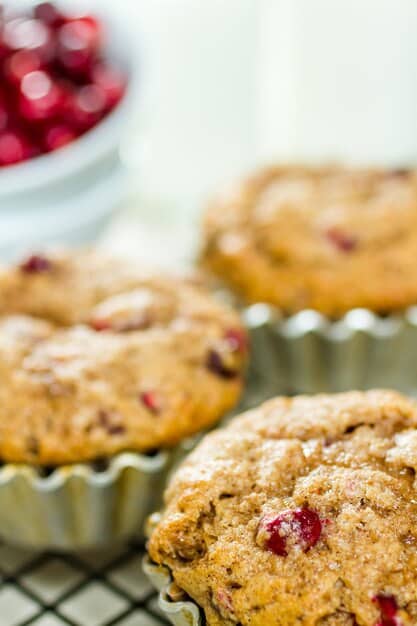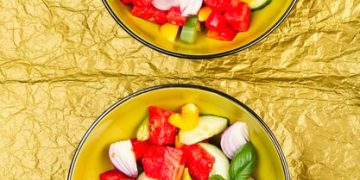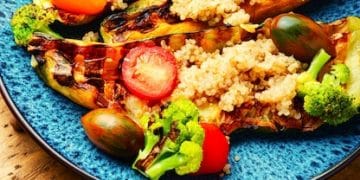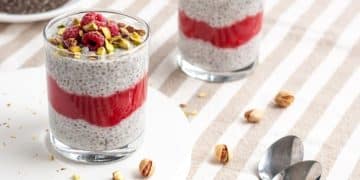Healthy Holiday Baking: Guilt-Free Festive Treats for 2025

Healthy Holiday Baking: 3 Festive Recipes with Reduced Sugar and Fat (Updated for 2025) offers delicious, guilt-free alternatives to traditional holiday treats, focusing on reduced sugar and fat content while maintaining festive flavors and appeal.
Get ready to indulge in the holiday spirit without the guilt! This year, embrace Healthy Holiday Baking: 3 Festive Recipes with Reduced Sugar and Fat (Updated for 2025), and discover how to create delicious and healthier versions of your favorite holiday treats.
Baking a Healthier Holiday: Why It Matters
The holidays are a time for celebration, family, and, of course, delicious food. However, traditional holiday baking often involves high amounts of sugar and unhealthy fats. Making healthier choices doesn’t mean sacrificing flavor; it simply means being more mindful of ingredients and preparation methods. Let’s explore why opting for healthier holiday baking is a fantastic idea.
Health Benefits of Reduced Sugar and Fat
One of the primary reasons to reduce sugar and fat in your holiday baking is the direct impact on your health. Lowering sugar intake can help regulate blood sugar levels, prevent energy crashes, and reduce the risk of type 2 diabetes. Similarly, cutting down on unhealthy fats can improve heart health and reduce cholesterol levels.
Maintaining Festive Flavors
Many people worry that healthier baking means bland and unappetizing desserts. This couldn’t be further from the truth! With the right substitutions and techniques, you can maintain all the festive flavors you love. Think about using natural sweeteners like maple syrup or honey in moderation, or incorporating spices like cinnamon, nutmeg, and ginger to enhance the taste without adding extra sugar.

Here are a few simple swaps to get you started:
- Swap refined sugar for natural sweeteners: Use maple syrup, honey, or dates.
- Replace butter with healthier fats: Try coconut oil, applesauce, or avocado.
- Use whole wheat flour instead of white flour: Adds fiber and nutrients.
By making small, thoughtful changes, you can enjoy all the joy of holiday baking while prioritizing your health and well-being. It’s a win-win situation that allows you to celebrate the season with delicious treats that nourish your body.
Recipe 1: Reduced-Sugar Gingerbread Cookies
Gingerbread cookies are a classic holiday treat, but they are often loaded with sugar. This recipe offers a healthier twist, using natural sweeteners and spices to create a delicious and guilt-free version. Get ready to enjoy the warmth and spice of gingerbread without the sugar crash.
Ingredients You’ll Need
To make these reduced-sugar gingerbread cookies, gather the following ingredients:
- 3 cups whole wheat flour
- 1 teaspoon baking soda
- 1 teaspoon ground ginger
- 1 teaspoon cinnamon
- ½ teaspoon ground cloves
- ½ cup coconut oil, melted
- ½ cup maple syrup
- ¼ cup molasses
- 1 large egg
- 1 teaspoon vanilla extract
Step-by-Step Baking Instructions
Follow these simple steps to bake your reduced-sugar gingerbread cookies:
- Preheat your oven to 350°F (175°C).
- In a large bowl, whisk together the flour, baking soda, ginger, cinnamon, and cloves.
- In a separate bowl, combine the melted coconut oil, maple syrup, molasses, egg, and vanilla extract.
- Gradually add the wet ingredients to the dry ingredients, mixing until a dough forms.
- Roll out the dough on a lightly floured surface and use cookie cutters to cut out gingerbread shapes.
- Place the cookies on a baking sheet lined with parchment paper.
- Bake for 8-10 minutes, or until the edges are lightly golden.
- Let the cookies cool on the baking sheet for a few minutes before transferring them to a wire rack to cool completely.
These cookies are perfect for decorating with a simple glaze made from powdered erythritol and a touch of lemon juice. Enjoy the festive flavors without the guilt!
Recipe 2: Mini Pumpkin Pies with Whole Wheat Crust
Pumpkin pie is a beloved holiday dessert. This recipe uses a whole wheat crust and reduces the sugar content, making it a healthier option without compromising on taste. These mini pumpkin pies are perfect for portion control and festive gatherings.
Gathering the Ingredients
Here’s what you need to create these delicious mini pumpkin pies:
- For the crust:
- 1 ¼ cups whole wheat flour
- ½ teaspoon salt
- ½ cup cold coconut oil, cut into small pieces
- 3-5 tablespoons ice water
- For the filling:
- 1 (15-ounce) can pumpkin puree
- ½ cup maple syrup
- 2 large eggs
- 1 teaspoon pumpkin pie spice
- ½ teaspoon vanilla extract
- Pinch of salt
Baking Your Mini Masterpieces
Follow these steps to bake your mini pumpkin pies with a whole wheat crust:
- Prepare the crust: In a large bowl, whisk together the flour and salt. Cut in the cold coconut oil using a pastry blender or your fingers until the mixture resembles coarse crumbs. Gradually add the ice water, one tablespoon at a time, until the dough comes together.
- Form the dough into a disc, wrap it in plastic wrap, and refrigerate for at least 30 minutes.
- Preheat your oven to 375°F (190°C).
- Roll out the dough on a lightly floured surface and use a cookie cutter or knife to cut out circles slightly larger than your mini pie tins.
- Press the dough into the mini pie tins and trim any excess.
- Prepare the filling: In a large bowl, whisk together the pumpkin puree, maple syrup, eggs, pumpkin pie spice, vanilla extract, and salt.
- Pour the filling into the prepared crusts.
- Bake for 20-25 minutes, or until the filling is set and the crust is golden brown.
- Let the pies cool completely before serving.
These mini pumpkin pies are a delightful and healthier way to enjoy a classic holiday dessert. The whole wheat crust adds a nutty flavor and extra fiber, while the reduced sugar content keeps them light and delicious.
Recipe 3: Cranberry Muffins with Reduced Fat
Cranberry muffins are a perfect addition to any holiday breakfast or brunch. This recipe reduces the fat content by using applesauce and incorporates fresh cranberries for a burst of tartness. These muffins are moist, flavorful, and a healthier way to start your day.
Ingredients Snapshot
To bake these reduced-fat cranberry muffins, you’ll need:
- 2 cups all-purpose flour
- ½ cup granulated erythritol
- 2 teaspoons baking powder
- ½ teaspoon salt
- ½ cup unsweetened applesauce
- ¼ cup coconut oil, melted
- 1 large egg
- ¾ cup milk
- 1 teaspoon vanilla extract
- 1 ½ cups fresh cranberries
Easy Baking Steps
Follow these straightforward steps to bake your reduced-fat cranberry muffins:
- Preheat your oven to 400°F (200°C) and line a muffin tin with paper liners.
- In a large bowl, whisk together the flour, granulated erythritol, baking powder, and salt.
- In a separate bowl, combine the unsweetened applesauce, melted coconut oil, egg, milk, and vanilla extract.
- Pour the wet ingredients into the dry ingredients and mix until just combined. Be careful not to overmix.
- Gently fold in the fresh cranberries.
- Fill the muffin liners about ¾ full.
- Bake for 18-20 minutes, or until a toothpick inserted into the center comes out clean.
- Let the muffins cool in the tin for a few minutes before transferring them to a wire rack to cool completely.

These cranberry muffins are a healthier and delicious way to enjoy a holiday favorite. The applesauce helps to reduce the fat content while keeping the muffins moist and flavorful. The fresh cranberries add a festive touch and a burst of tartness that perfectly complements the sweetness of the muffins.
Tips for Successfully Reducing Sugar and Fat
Reducing sugar and fat in your baking can be straightforward, but it helps to have a few tricks up your sleeve. Whether it’s ingredient substitutions or baking techniques, mastering these tips will ensure your healthy holiday treats are a hit.
Ingredient Substitution Strategies
Substituting ingredients is key to reducing sugar and fat in baking. Instead of refined sugar, consider using natural sweeteners like maple syrup, honey, or dates. These options not only add sweetness but also bring additional flavors and nutrients to your recipes. For fats, try using unsweetened applesauce, mashed avocado, or coconut oil.
Baking Techniques to Optimize Flavor
Proper baking techniques can help optimize the flavor of your reduced-sugar and -fat treats. Using spices like cinnamon, nutmeg, and ginger can enhance the sweetness and create a more satisfying flavor profile. Also, be mindful of baking times; overbaking can lead to dry and less flavorful results.
Here are some additional tips for successful substitutions:
- Use extracts: Add vanilla, almond, or peppermint extract to enhance flavors.
- Incorporate fruit: Use fresh or dried fruits to add natural sweetness and moisture.
- Adjust liquids: When reducing fat, you may need to add extra liquid to maintain moisture.
With these strategies, you can confidently create healthy holiday baked goods that are both delicious and nutritious. Experimenting with different substitutions and techniques can lead to exciting new flavors and healthier versions of your favorite treats.
Adapting Traditional Recipes for Healthier Baking
Transforming traditional holiday recipes into healthier versions is easier than you might think. By making a few clever swaps and adjustments, you can significantly reduce sugar and fat without compromising on flavor. Let’s explore how to adapt your favorite recipes for healthier baking.
Identifying Key Areas for Improvement
Start by identifying the areas where you can make the most significant impact. Look for ingredients high in sugar and unhealthy fats. Common culprits include refined sugar, butter, and processed flours. Once you’ve identified these, you can begin exploring healthier alternatives.
Making Gradual Changes
It’s often best to make gradual changes to your recipes. Start by reducing the sugar content by a small amount, such as ¼ cup, and see how it affects the taste and texture. You can also substitute a portion of the butter with unsweetened applesauce or coconut oil. Making gradual changes allows you to adjust the recipe to your liking without drastically altering the final result.
Here’s a step-by-step guide to adapting your recipes:
- Reduce sugar: Start by reducing the sugar by 25% and adjust to taste.
- Swap fats: Replace half the butter with applesauce or coconut oil.
- Use whole grains: Substitute white flour with whole wheat or almond flour.
With a little creativity and experimentation, you can adapt your traditional holiday recipes to be healthier and more nutritious, ensuring that everyone can enjoy the festive treats without the guilt.
The Psychology of Healthy Holiday Eating
Maintaining a healthy diet during the holidays can be challenging, but understanding the psychology behind holiday eating can help you make better choices. By recognizing the emotional and social factors that influence your eating habits, you can develop strategies to stay on track with your health goals.
Recognizing Emotional Eating Triggers
The holidays can be a time of stress, nostalgia, and heightened emotions. Emotional eating is a common response to these feelings, and it’s essential to recognize your triggers. Common triggers include stress, loneliness, boredom, and sadness. Identifying these triggers can help you develop coping mechanisms other than food.
Mindful Eating Strategies
Practicing mindful eating can also help you make healthier choices during the holidays. Mindful eating involves paying attention to your body’s hunger and fullness cues, savoring each bite, and avoiding distractions while eating. This approach can help you stay present and make more conscious food choices.
Here are some mindful eating tips to keep in mind:
- Eat slowly: Take your time and savor each bite.
- Pay attention to your body: Recognize when you’re truly hungry and when you’re full.
- Avoid distractions: Turn off the TV and put away your phone while eating.
Understanding the psychology of healthy holiday eating can empower you to make better choices and enjoy the season without guilt. By recognizing your emotional triggers and practicing mindful eating, you can prioritize your health and well-being while still indulging in festive treats.
| Key Point | Brief Description |
|---|---|
| 🍰 Reduced Sugar | Use natural sweeteners like maple syrup or erythritol instead of refined sugar. |
| 🥑 Healthy Fats | Replace butter with applesauce, avocado, or coconut oil. |
| 🌾 Whole Grains | Opt for whole wheat flour to add fiber and nutrients. |
| 🍎 Mindful Eating | Pay attention to hunger cues and savor each bite to avoid overeating. |
Frequently Asked Questions
▼
Great alternatives include maple syrup, honey, erythritol, and dates. These offer sweetness along with additional flavors and nutrients, making your treats healthier and more interesting.
▼
You can reduce fat by using applesauce, mashed avocado, or coconut oil in place of butter. These substitutes help maintain moisture while lowering the overall fat content.
▼
Yes! Whole wheat flour adds fiber and nutrients to your baked goods. It can be used in place of white flour in many recipes, providing a heartier texture and a slightly nutty flavor.
▼
Absolutely! By making smart substitutions and practicing mindful eating, you can enjoy festive treats without compromising your health. It’s all about balance and making informed choices.
▼
Identify emotional triggers and find alternative coping mechanisms, like exercise or meditation. Practice mindful eating by savoring each bite and paying attention to your body’s hunger cues.
Conclusion
Embracing healthy holiday baking allows you to enjoy the festive season without sacrificing your well-being. With these updated recipes and tips for 2025, you can create delicious, guilt-free treats that everyone will love. Happy baking!





